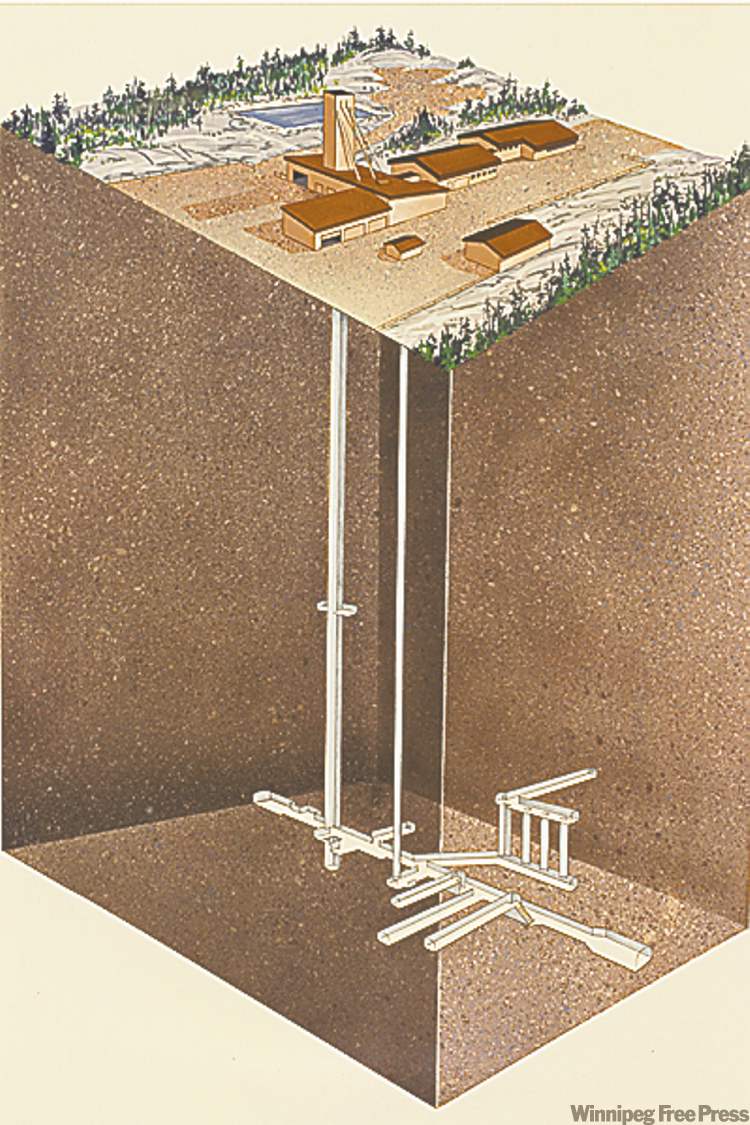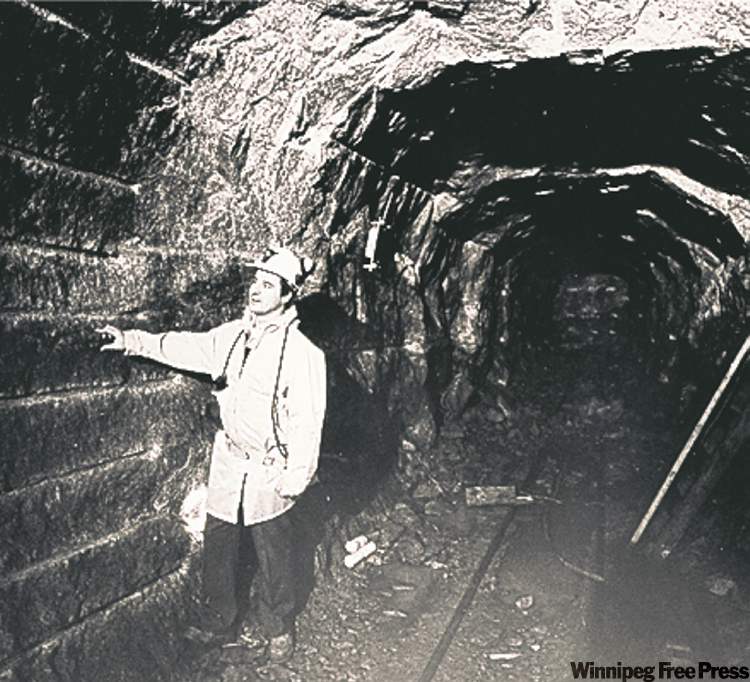Whiteshell labs closes underground facility forever
Seal will test future storage of nuclear waste
Advertisement
Read this article for free:
or
Already have an account? Log in here »
To continue reading, please subscribe:
Monthly Digital Subscription
$1 per week for 24 weeks*
- Enjoy unlimited reading on winnipegfreepress.com
- Read the E-Edition, our digital replica newspaper
- Access News Break, our award-winning app
- Play interactive puzzles
*Billed as $4.00 plus GST every four weeks. After 24 weeks, price increases to the regular rate of $19.00 plus GST every four weeks. Offer available to new and qualified returning subscribers only. Cancel any time.
Monthly Digital Subscription
$4.75/week*
- Enjoy unlimited reading on winnipegfreepress.com
- Read the E-Edition, our digital replica newspaper
- Access News Break, our award-winning app
- Play interactive puzzles
*Billed as $19 plus GST every four weeks. Cancel any time.
To continue reading, please subscribe:
Add Free Press access to your Brandon Sun subscription for only an additional
$1 for the first 4 weeks*
*Your next subscription payment will increase by $1.00 and you will be charged $16.99 plus GST for four weeks. After four weeks, your payment will increase to $23.99 plus GST every four weeks.
Read unlimited articles for free today:
or
Already have an account? Log in here »
Hey there, time traveller!
This article was published 08/12/2010 (5427 days ago), so information in it may no longer be current.
A simple ceremony marked the end of an era of nuclear testing in Manitoba.
Last month, with little fanfare, a handful of people gathered near Pinawa at the Whiteshell Laboratories to seal forever the Underground Research Laboratory, a deep hole bored into the bedrock of the Canadian Shield 27 years earlier to test the safe storage of nuclear waste.
The job to close the underground complex — its deepest shaft is 420 metres, about the height of the CN Tower in Toronto — started more than four years ago. Atomic Energy of Canada Limited (AECL) began decommissioning the underground lab four years ago.

“You just can’t walk away and leave a hole in the ground,” said Paul Thompson, geotechnical science and engineering branch manager with AECL. “We’ve basically removed all of the equipment and instrumentation that was underground. That includes things like all of the water pipes, compressed air pipes, the ventilation pipes, the electrical cables, all of the lighting as well as all of the furnishings.”
All that remains are the steel rails, embedded in concrete, used for the small underground railway once used to shuttle people and materials around the two levels. Everything else will be safely disposed of — there is no nuclear material stored in the underground chambers.
Thompson said despite its closure, research at the site 110 kilometres northeast of Winnipeg will continue.
What they’ll be watching is how well a huge man-made “seal” installed in the interior of the shaft works to keep two water aquifers forever separate. The seal is built of highly compacted clay sandwiched between two massive concrete plugs.
“Basically, it’s resembling what we would imagine a seal would be at a (nuclear waste) repository if we were ever to build a repository,” Thompson said.
Thompson said at its deepest level, the ground water is three times more salty than sea water. At 274 metres from the surface, there is another aquifer of fresh water.
He said Canada’s Nuclear Fuel Waste Management Organization, with help from nuclear-management groups from Sweden, Finland and France, will monitor the seal over the next few years to see how it performs and whether what’s learned can be applied to any future underground storage facility to store nuclear waste.
“This is as close as you’ll get to basically seeing how a repository seal would perform,” Thompson said.

The underground lab below the seal was artificially flooded so the seal could start working right away. To let it fill up with ground water would take about 30 years. Ground water is also slowly filling the level above the seal. About half-a-metre of water fills it now.
The underground lab was separate from the AECL research complex at Pinawa, which has been phasing down ever since the Crown corporation decided in 1994 to close it.
Despite lobbying several years ago to convert the Whiteshell Laboratories site to produce hydroelectric power, work will continue over the next few decades to demolish buildings and shut down a Slowpoke nuclear reactor and another research-related reactor. There is also a 0.8-hectare site for storing radioactive waste. A third cleanup phase will last 200 years and will include monitoring any residual radioactive waste left behind.
bruce.owen@freepress.mb.ca

